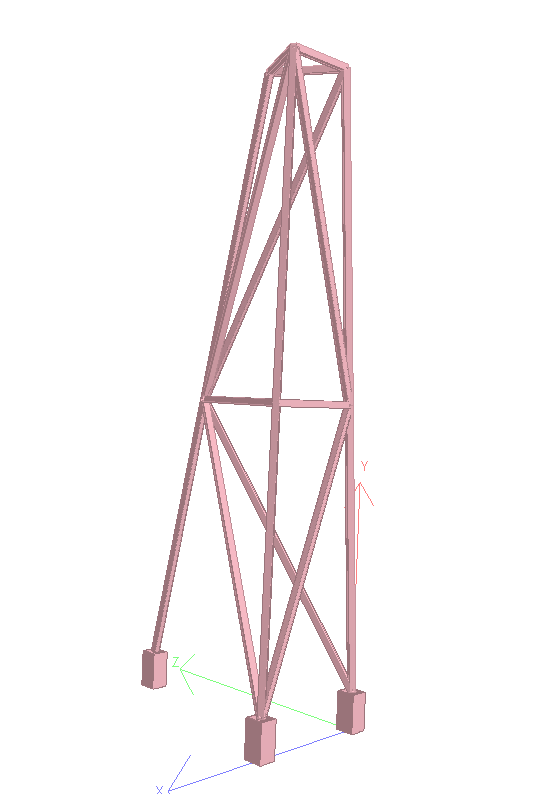Hi everyone,
I just want to get your thoughts on how you would model this structure (having some differing opinions within office). Basically, the tank on top is being increased to hold more water and I am tasked with making sure the stand can support it. It is made of 2x2x1/4" mild steel square tubing. It has angle iron bracing at mid-height roughly welded all around. The top (triangle portion) of the stand is also made of the same square tubing welded all around. The bottoms are welded all around to a square plate and bolted with 4 bolts at each corner. See attached pic. Two of the legs are nearly vertical and the third is angled due to space constraints.
(PIC REMOVED)
I will be modelling in STAAD (not a fancy Finite Element) and have limited budget to complete this analysis. Thoughts on setting up model? What supports to use, etc? Also, what are you thoughts on the lack of a diagonal brace connecting the top to mid point to bottom. Looks like a bit of torsion would twist the stand pretty easily?
Thanks
I just want to get your thoughts on how you would model this structure (having some differing opinions within office). Basically, the tank on top is being increased to hold more water and I am tasked with making sure the stand can support it. It is made of 2x2x1/4" mild steel square tubing. It has angle iron bracing at mid-height roughly welded all around. The top (triangle portion) of the stand is also made of the same square tubing welded all around. The bottoms are welded all around to a square plate and bolted with 4 bolts at each corner. See attached pic. Two of the legs are nearly vertical and the third is angled due to space constraints.
(PIC REMOVED)
I will be modelling in STAAD (not a fancy Finite Element) and have limited budget to complete this analysis. Thoughts on setting up model? What supports to use, etc? Also, what are you thoughts on the lack of a diagonal brace connecting the top to mid point to bottom. Looks like a bit of torsion would twist the stand pretty easily?
Thanks

![[smile] [smile] [smile]](/data/assets/smilies/smile.gif)
